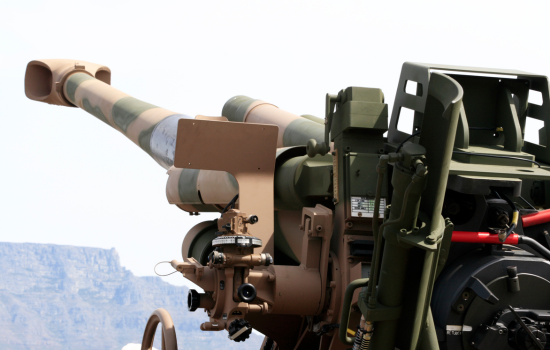Tunnels as war crime
First published in Times of Israel
Operation Protective Edge has brought unprecedented attention to tunnel warfare, and we can expect tunnels to remain center stage as the conflict winds down and inquiries – legal and otherwise – related to the conflict are launched.
Though tunnels were used by the British Army during World War I, the Vietcong in Vietnam, Al Qaeda in Afghanistan, and even the rebels during the current conflict in Syria, tunnels have not been seen as a key strategic threat in decades – until they formed the Israeli government’s main justification for Operation Protective Edge this July. As the military effort comes to an end, Israel will certainly assess whether the security establishment (wrongly) downplayed the security risk posed by the Hamas-built tunnels.
Other questions, this time related to the legal issues surrounding tunnel warfare, will also emerge. Tunnels have been used as a tactic of war since ancient times, but, unlike other military means and methods which are regulated by international law, tunnels as such are not addressed in the law governing war. Some would interpret this silence as indicating that tunnel warfare does not raise any unique legal issues. Dealing with tunnels, they might argue, does not significantly differ, from a legal perspective, from waging war in urban areas. But it does.
The tunnels built by Hamas in Gaza, in particular, present novel issues for international law. Gaza’s tunnels are different from traditional military objectives like army bases or weapons depots. In their design, the tunnels burrow under an internationally recognized border, they traverse civilian areas, and their primary objective and effect – contrary to international law – is to harm and endanger civilians, both Israeli and Palestinian.
While being constructed, Gaza’s tunnels pose a substantial risk to those building them – often children – and to the civilian structures under which they are dug. The last few weeks have shown us that most tunnel digging begins within homes, hospitals, mosques and other “protected objects”. Filled with explosives and weapons, tunnels can detonate at any time, risking not only the lives of the diggers and operatives who use them, but also the civilians living above them. And this is only on the Palestinian side of the border.
Equally challenging are the conditions in which these tunnels may be eliminated. In Gaza, which does not have the open spaces found in Vietcong-controlled Vietnam or al Qaeda-controlled Afghanistan, the destruction of a tunnel inevitably results in the destruction of civilian structures above the subterranean passage, and in many cases the loss of civilian lives.
Destroying a tunnel involves massive bombing from above or finding its access points and destroying it from within. An explosion on one part of a tunnel will inflict unforeseen damage on different and potentially unknown segments of the tunnel, or even to the land surrounding it – potentially damaging schools, civilian homes, and businesses. In legal terms, this means that the tunnel’s interconnected infrastructure impedes the assessment of proportionality prior to its destruction, i.e. the determination of whether collateral damage resulting from the destruction of the tunnel might be excessive in the relation to the military advantage anticipated from that destruction. Even careful mapping of the tunnel ahead of a strike may not suffice to ascertain collateral damage, since tunnels can be expanded rapidly and beyond the detection of intelligence services. Tunnels thus present the special danger of unforeseen damage to civilians and protected objects on both sides of a conflict (from civilian infrastructure to cultural and religious objects and the environment) during their construction and destruction.
For these reasons, the construction of combat tunnels under civilian populated areas and protected sites like hospitals, across borders, and/or with the intention of maiming civilians must be regarded as a violation of international law.
Unfortunately, the regrettable and unforeseen consequences caused by the destruction of a tunnel complex cannot be avoided. History teaches that there is no real alternative to destroying tunnels. Making them unwelcoming or ousting their occupants and munitions does not solve the problem for good. Tunnels can be “inherited” years later by the same or another enemy, as in the Vietnam War or the Afghan war. Tunnels must thus be destroyed in their entirety for the security threat to be eliminated, regardless of their location and purpose at the time of their dismantlement. This, too, sets underground warfare apart from urban warfare: in urban warfare where civilian buildings are used by armed groups to plan and carry out their operations, the buildings themselves need not be taken down for the threat to be eliminated.
Underground warfare raises additional legal challenges due to the “unknown factor” which permeates virtually every aspect of anti-tunnel operations – and in levels exponentially higher than in above-ground operations. Knowing where the enemy hides, assessing the extent of its destructive capabilities, and localizing the threat present a nearly insurmountable challenge in the context of underground warfare. Tunnels significantly diminish incoming intelligence and limit the means of communication that can be used inside the tunnels once they have been discovered. Providing “effective advance warning” of imminent strikes emanating from tunnels is practically impossible. And knowing which weapons and what level of force to use to counter the threat – without knowing what is going on underground – can be a difficult call.
So while underground warfare may resemble ordinary urban warfare in many ways, concepts developed to contend with urban warfare will not fully answer the questions asked by legal experts in the aftermath of the conflict. Tunnel warfare raises uniquely challenging legal issues which will have to be tackled with.






